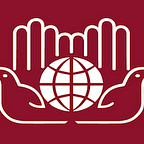Education in Emergencies and for Sustainable Development Goals
September 30, 2015, New York City — The Open Working Group’s Proposal for the Sustainable Development Goals (SDGs) also known as the Zero Draft managed to put forward an ambitious and comprehensive agenda to tackle poverty, climate change and social exclusion but had some glaring blind spots. Focusing on developmental challenges, political inclusion and preventive action, the response to humanitarian crises was not a priority and was only mentioned in the Introduction to the first document but not in any of the Goals and Targets.
As part of the Post-2015 Intergovernmental Negotiations, in May 2015, two of the 169 targets (both related to resilience in Goals 1 and 11) included a specific reference to the people affected by humanitarian emergencies. In a world with ever growing numbers of forcibly displaced people caused by conflicts and natural disasters it will be impossible to achieve the ‘getting to zero’ concept of the SDGs if humanitarian crises are not put at the center of the world’s attention.
Most of the people affected by those crises are children. For anyone working on education the Proposal of the Sustainable Development Goal 4 opened an unprecedented window of hope marking a significant improvement from the quantitative approach of the Millennium Development Goals and the limited scope of the Unesco’s Education For All Objectives. But there is no chance of achieving the targets of Goal 4 (from universal primary and secondary education, to the equal access to vocational and tertiary education, to the improvement in the quality of teachers around the world) if we leave behind the children who have been forced to leave their homes because of violence or weather-related disasters.
More than half of the people displaced by conflict in the world today are children. War has a dramatic disproportionate impact on the life of children, disrupting the school systems and compromising their future. When children reach refugee camps the availability of schools is limited and the quality of the education insufficient. Even in protracted crises we haven’t been able to ensure universal access to quality education for the children that have been living in camps for years. Half of the 57 million children who are out of school today live in conflict-affected countries. Without a concerted effort to provide them with enough classrooms, material and qualified teachers Goal 4 will be unmet in fifteen years time.
It has been estimated that in this decade 175 million children will be affected by natural disasters (STC, 2014). The Nepalese earthquake of 2015 left more than one million children without classrooms. The drought in the Sahel region forced dozens of thousands of children to leave the schools in order to find food for their families. The number of natural disasters will increase in the next years and with it the number of children that will some level of traumatic disruption to their schooling. If the needs of these millions of children are not addressed specifically addressed we might end up with more children out of school in 2030 than the ones we have in 2015.
The Sustainable Development Goals will have a major impact on donor policies in the next years. Recent declines in funding for education in emergencies have limited the capacity of local and international agencies to respond to the needs of the children. Putting humanitarian crises at the heart of SDGs Goal 4 would create the necessary impulse to convert the drama of displacement into an opportunity for learning.
Today Governments, private institutions and international organizations are rethinking the way education is provided in a rapidly changing world. If we don’t incorporate children affected by conflict and natural disasters the predictable outcome will be more poverty, more despair, widening inequality and the failure of the international community to take care of the most vulnerable amongst us.
-Gonzalo Sánchez-Terán, June 2015
This post is based off remarks prepared by Gonzalo Sánchez-Terán in advance of the 2015 International Conference on Sustainable Development — “Implementing the SDGs: Getting Started,” hosted at Columbia University from September 23–24, 2015. Gonzalo Sánchez–Terán is a frequent tutor for the International Diploma in Humanitarian Assistance (IDHA) and a graduate of IDHA 16. From October 4th — 8th, 2015, he will direct the 2nd IIHA Education in Emergencies (EiE) course in Amman, Jordan. Learn more
Katarzyna Laskowski
This article was originally published on the previous IIHA Blog.
